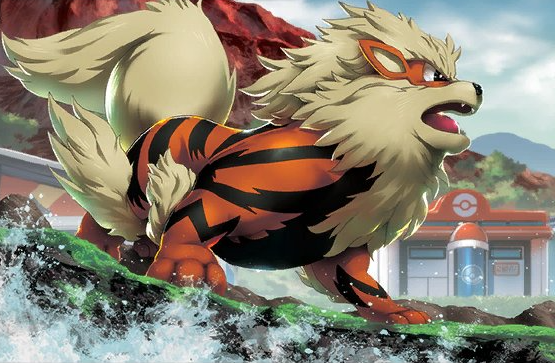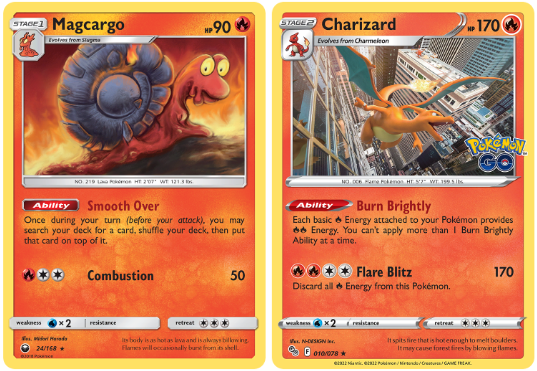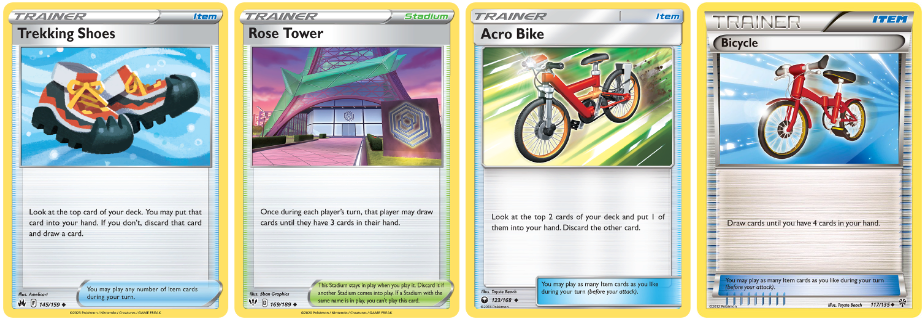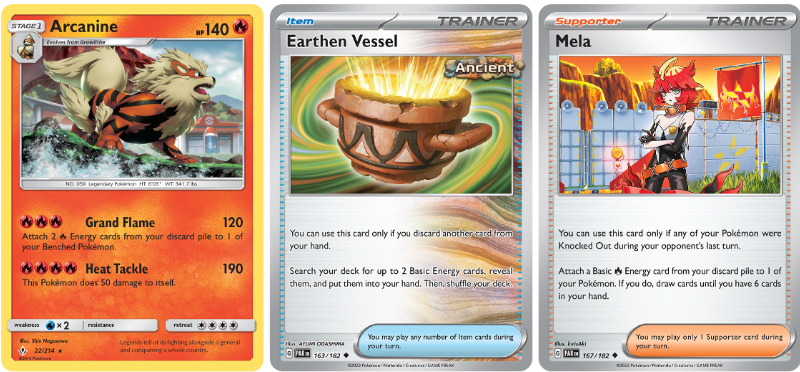

Building a Gym Leader Challenge Deck List: Finding Synergy (2/3)
Once you’re generally happy with the direction you’ve chosen for your deck, it’s time to build synergistic relationships between Pokemon, Trainers and Energy. Synergy is defined as the cooperation of two or more organizations to produce a combined effect greater than the sum of their separate effects. GLC boasts a nearly 13 year card pool, with thousands upon thousands of Pokemon, Trainers and Energy cards to choose from. With so many options, there are certainly plenty of different ways to find synergy among the various parts of your deck.
In a singleton format, finding relationships between cards that work together is important. Top decking a card that has synergy with the existing board state versus some random one-of can mean the difference between winning and losing. I like to think of synergy as something that “unlocks” the full potential of a deck. For example, while testing with friends during the iteration process of deck building, it is quite evident when you or your opponent has found a card or combination of cards that takes a deck to the next level. Finding synergy requires dedication to a deck and constant iteration to unleash.
Theorycrafting
My favorite part of GLC, theorycrafting is just playing with ideas in your head and discussing pros and cons of different cards or strategies. Theorycrafting is a huge part of deck building and how you can get started building synergy.
Theorycrafting is the best way to get friends and discord members involved in deck building. It’s all about sharing an idea, your thoughts behind it, and getting some feedback from other experienced players. There are always angles of playing and deck building that elude even the most experienced of trainers, so if you are trying something new, a group theorycrafting session can be like taking a shortcut to building a great list.
Another big part of the process is learning from existing decks. Reading other successful deck lists and write-ups for why those players built lists the way they did contributes to a deeper understanding of existing and well-known synergies.
And lastly, I like to spend time reading through the card pool for my chosen type or by keyword to unlock new ideas and potential. Not everyone has played Pokemon since 2011 when Black and White was released (myself included), so the older cards in the pool can take a lot of time to learn. It is often a slow and iterative process to incorporate cards into your knowledgebase, but it is definitely an experience I would recommend to anyone looking to build fun and unique deck lists!
Theorycrafting by Example
During the PokeStop and item craze of the mid-2023 online scene, I applied what I learned playing PokeStop decks of various types to Fire. I was missing a Fire badge at the time and was unhappy with my previous experiences playing Fire. PokeStop was all the rage and I had fun building item decks, so I thought, why not? I started theorycrafting a PokeStop Fire build and realized that the discard pile is actually your friend, not foe, in Fire.

The process started with the realization that Magma Basin and Blacksmith, two of Fire’s strongest cards work really well with putting energy in the discard pile, and PokeStop, part of the item engine, puts Fire energy there on occasion. In addition to that, my favorite Pokemon, Arcanine, also benefits from having energy in the discard pile. To me, that was enough to throw together an item engine shell and some core Fire Pokemon and start building a list!

My previous experiences with Fire made it seem to me that it was hard to truly get set up to a full board state with all the support Pokemon ready to stream attackers and control the game. As such, I decided to go with a smaller support lineup of Magcargo and Charizard. As I was looking at my list, I realized that Magcargo is the perfect counterpart to an item engine because Magcargo can Smooth Over into the perfect card for turn with any number of item cards in hand that can grab it off the top of the deck, and thus, no need for Salazzle or Delphox!

I loaded up the deck builder and put the first 60 on paper. I studied the card pool for items that would let me draw off the top of the deck and supporters that drew forward into the deck without shuffling in hopes of making Magcargo as meaningful as possible. It was hard to whittle down the list of cards I had from 70 to 60, but I tried to opt for a balanced card pool of items and supporters without going overboard on either point. Fire really wants to use Blacksmith as much as possible and I tried to build the deck around this strategy. Because Fire is blessed with so many strong supporters, I felt like too many draw forward supporters would disrupt my ability to draw into the card I needed that turn with Magcargo. Previous fire decks relied on discarding an energy and drawing with Salazzle to play their strong supporters, but I wanted a less convoluted method of drawing forward while still being able to play the exact card I needed in the same turn. This tactic is the main reason for the heavy bias towards item cards. However, at the same time, the list can’t run so few supporters that it gets stuck without enough cards in hand in the early game. After settling on a theorycrafted 60, I felt it was time to move on from theorycrafting to real testing.
Iteration
Oftentimes, lots and lots of trial and error is required to really find the cards you need. A deep understanding of your deck, how the existing 60 cards interact with each other, and how they interact with your opponent’s decks helps determine what is missing. Practice, practice, practice is the solution!
Testing against meta decks is not usually necessary for the first step in testing, it can be useful, but if you really want to know whether or not your cards play nicely together, you can play against anything. If you find yourself with no explosive plays, no swings in tempo and dead hands, you can probably guess that something has gone wrong with your theorycrafting process. Explosive plays and tempo swings are really important in GLC, and without them, you will most likely lose because once behind, you won’t be able to recover in the prize trade. It’s always important to find cards that work together to get you ahead in the prize trade by your chosen means. That can mean taking 2 for 1 prize trades, disrupting or controlling your opponent so heavily they can’t respond to threats, or by starting out so hot they can’t recover.
While you’re playing some practice games, keep an eye on which cards are functioning like you expected and which interactions are actually important in helping you win. Sometimes there are exciting plays you thought would be really fun and cool to pull off, only to learn that during testing they rarely come to fruition, or they don’t have the full impact you thought. Replace those cards that are impactful or are clogging up your hand with cards that help build your boardstate or come from behind.
There’s no shame in cutting a Pokemon line that isn’t performing as expected or a set of trainers that aren’t cutting it. That is an important part of the process and frees up room for more synergistic options. Look for new choices that can help solve existing problems and work more fluidly with cards in your list.
Iteration by Example
When testing out my PokeStop Fire list, I found myself with tiny hands and some bad starts at the beginning of games. I had originally opted for too many items because of PokeStop. PokeStop is a great card, but it’s a one-of, so overloading on suspected synergy with a single card was overkill. That ended up leaving me with too few options as the game progressed. As a result, I had to rebuild the trainer list a bit to include more draw forward supporters and less coin-flip items. The coin-flip items are great in theory because of how they can grab you the exact card you need on a turn, but Magcargo can do that as well and is much more reliable. I decided to spend more resources towards building up Magcargo plays rather than relying on potentially frustrating coin flips. As a result, I ended up with more playable cards and larger hands to work with.

Another interesting aspect of testing was realizing that I sometimes wanted even more energy in the discard pile than I had at times. Since Arcanine, Magma Basin, Mela and Blacksmith want energy in the discard pile to operate, I included an Earthen Vessel to help discard Fire energy, and I changed my playstyle to discard Fire energy as early as possible when it was an option. It’s interesting to note that a big improvement here was not changing cards, but rather changing playstyle. I already had a good number of cards to discard energy, so my prioritization of what to discard was what was flawed in this scenario rather than the list of cards I had put together. I did not realize it early in testing, but I was not playing to my outs. Playing to your outs is an often overlooked aspect of deck building and synergy.
As stated before, this is why testing is so important. You really must understand what the flaws are during each game to understand how to correct them. Getting lots of games in with a deck and asking critical questions of yourself, your playstyle with the deck, decisions made during games and how they affected the outcome is crucial to improving both your gameplay and your deck building.
How do you know you’re done?
I knew my Fire list was finished when it almost never missed. Every single deck, whether you’re playing standard or GLC, will have some games where it opens with dead hands and can’t recover - this is an unfortunate fact of trading card games. However, with my fire deck, as I began testing other lists against it, I felt like the Fire deck “always had it.” No matter the starting hand, barring the occasional, unavoidable brick, the Fire deck was playing out its intended game plan and was hard to disrupt.
A good gym leader challenge deck list can play through adversity, have explosive starts and combos, and be difficult to disrupt. Once your list accomplishes these objectives, you know you are ready to dominate tournaments!